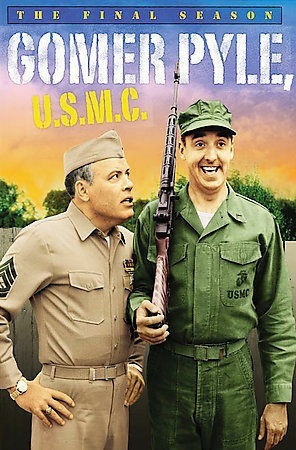Be Careful What You Ask For...........You Might Get It
Editor's Note: Part 3 of my undercover work at a big box retailer. Read on and enjoy. As always, you can find all my blog posts from 2013 to the present on my website at http://stevemarshallassociates.com/steves-blog/
The Report Card
Now that you are all experts in retailing, especially in the Big Box marketplace arena, here is a synopsis of the report I provided to management. If you grow weary of reading at this point, I can provide you with a "spoiler alert" preview of the bottom line - the final report was not well received by management!
Now, if you are still with me, let's take the success factors I outlined last week and let you take a look at them by the grade I gave each of them.

2. Service Factors - "D-" Here's where lack of employee engagement plays a significant role; I was told that annual

I inquired about the methodology used to ascertain these remarkably positive results and was told that it was administered by the parent company through their website, and, while it was anonymous it had an incentive attached to it for employees filling it out and returning it (online). This was the same methodology used for accumulating customer satisfaction scores; in that case, it was part of every paper receipt that customers received that instructed them to go to the company website to complete a customer satisfaction survey and enter to win a cash prize.
I pointed out the two flaws in these approaches to gathering data. The first was, that, since the survey was sent to each employee by the parent company, then the issue of trust and confidentiality would be in question, and second, the cash incentive would also skew the results.
"Set the Wayback Machine, Sherman."

In the 1980's and into the 90's Reader's Digest and Publisher's Clearing House were enormously successful in selling lots of magazine subscriptions to people by offering them a chance to win anywhere from $10,000 to $1,000,000. And, by the way, if you wanted to order some magazines, too, then, by all means, do so, and, if you were the lucky winner, then Ed McMahon (of Tonight Show fame) could show up at your door with an oversized check for that amount for you!
Even though it was clearly stated in the rules that no purchase was necessary to win, every annual winner had bought some magazines and not a single person that ever won didn't buy any magazines. Several studies after the fact proved that people were strongly motivated to buy subscriptions and linked their probability of winning to those purchases. When asked why by pollsters, the most common response was that people assumed that, if they didn't buy anything, their entry was thrown into a "different pile" before the drawing.
Much the same as the above Reader's Digest example, employees would skew the results of the annual employee engagement survey by making positive statements about the company and their jobs to avoid being thrown into the "different pile" and potentially be under scrutiny for saying negative things about their workplace. For consumers, the same phenomenon would apply; if you said derogatory things about the company, then your entry would be tossed (away) into the "different pile."
(NOTE: Linking the above information to what I observed was very telling and at odds with the company's annual survey of employees and customers, to the point, insofar, that I had to wonder if the surveys were really about the company that I was studying!)
Checking a random sampling of review sites for customer satisfaction (ResellerRatings.com and ConsumerAffairs.com), I


At this point, he sighed and asked, "What else do you have for me?" My measured response came from my first-hand

3. Merchandise - "B" - Given this chain's demographic customer target, they are doing OK, but they are certainly not

4. Price - "A" - For what they sell and the margins they sell them for, the price point is great! However, I suggested that their

- Their current profit margins were paper thin, and any changes outside of their control due to regulatory or market forces could sink them quickly.
- Labor costs have been held artificially low (with the use of federal and state subsidies), and with the advent of a new administration looking to cut entitlement programs at the federal level, a majority of their employees could find themselves unable to afford to work there. (I also reminded him that a new minimum wage hike had been recently voted into law in Colorado that could severely cut further into their margins.)

6. Supply Chain - "A-" - This was one area where they were almost excelling in the balancing act of controlling costs while

Next Week: Now What Do We Do?
""""""""""
Articles from Steven Marshall
View blog
Note: I am shocked and saddened by the demeanor and tone of Tuesday night's Presidential debate. Mor ...

NOTE: I found this excellent article in the 'National Review' by Rich Lowry. It certainly resonates ...

NOTE: Do you remember when there were only three TV networks and a couple of UHF channels? Well, t ...
Related professionals
You may be interested in these jobs
-
Network Engineer
Found in: Appcast US A2 ECP - 1 week ago
Leidos Undisclosed, United StatesDescription · Join a long-term prime program with new positions and strong leadership. The Cyber and SIGINT Solutions team is looking for you · Leidos provides great benefits, flexible schedules and the opportunity to grow your career. · Daily responsibilities: · Provide input t ...
-

Quality Assurance Manager
Found in: One Red Cent US C2 - 20 hours ago
OSI Jobs Hogansville, United StatesJob Title: Quality Assurance ManagerCompany:Stable, very profitable, and growing private food manufacturer.Location: Hogansville, GACompensation: $85k - $97kJob Summary: The QA Manager will report to the VP of Quality & Regulatory Affairs and lead a small team of QA Techs in all ...
-

Registered Nurse
Found in: One Red Cent US C2 - 11 hours ago
Ascension Providence Hospital Waco, United StatesRegistered Nurse - Renal Med Surg · Details · * Sign-on bonus: $20,000 · * Department: Medical Surgical - Renal · * Schedule: Full Time hour shifts), Night 7pm-7am · * Hospital: Ascension Providence · * Location: Waco, TX · Benefits · Paid time off (PTO) · Various health insuranc ...


Comments
Steven Marshall
7 years ago #2
Thanks, Bill!
Bill Stankiewicz
7 years ago #1